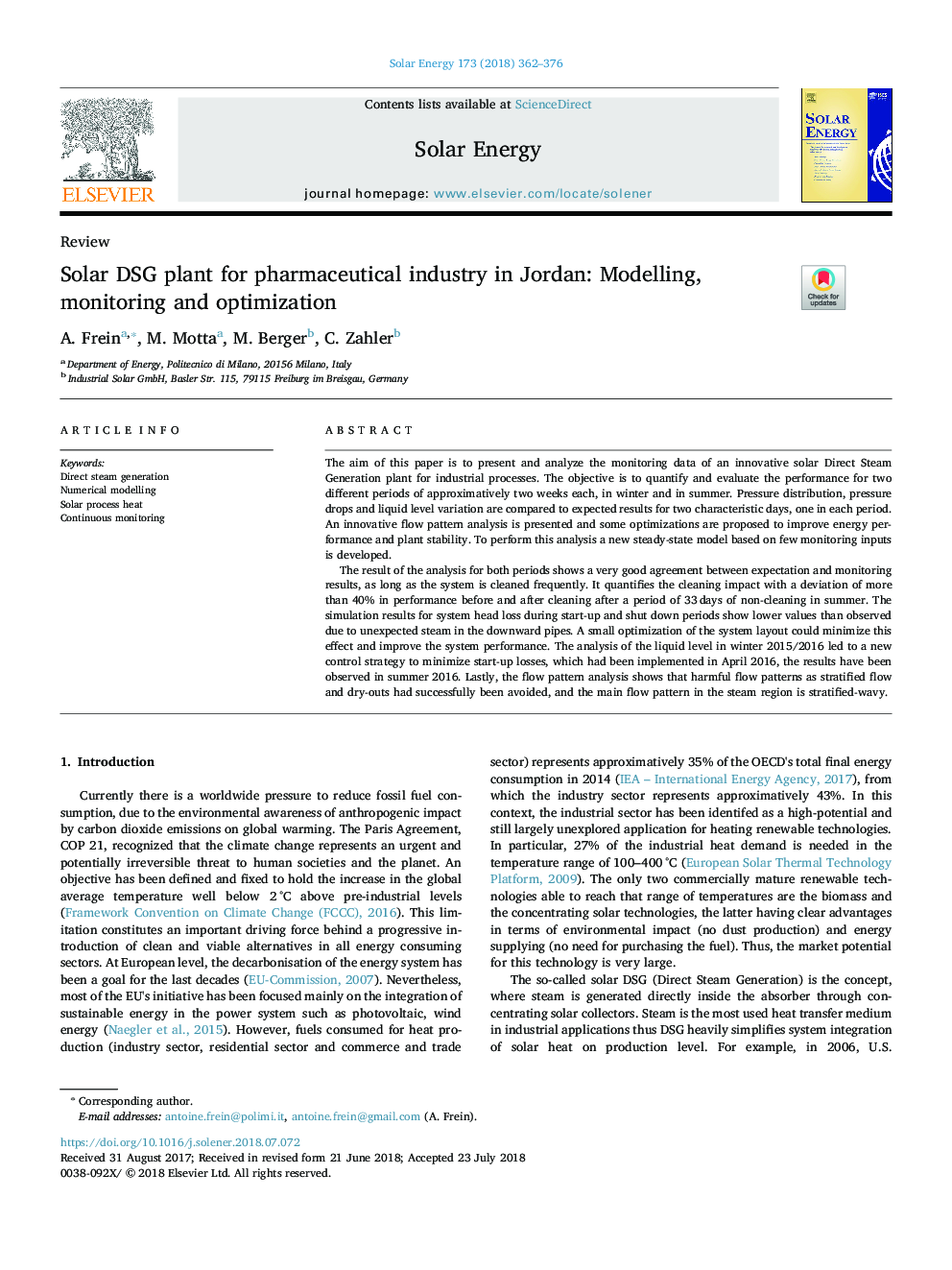| Article ID | Journal | Published Year | Pages | File Type |
|---|---|---|---|---|
| 7934977 | Solar Energy | 2018 | 15 Pages |
Abstract
The result of the analysis for both periods shows a very good agreement between expectation and monitoring results, as long as the system is cleaned frequently. It quantifies the cleaning impact with a deviation of more than 40% in performance before and after cleaning after a period of 33â¯days of non-cleaning in summer. The simulation results for system head loss during start-up and shut down periods show lower values than observed due to unexpected steam in the downward pipes. A small optimization of the system layout could minimize this effect and improve the system performance. The analysis of the liquid level in winter 2015/2016 led to a new control strategy to minimize start-up losses, which had been implemented in April 2016, the results have been observed in summer 2016. Lastly, the flow pattern analysis shows that harmful flow patterns as stratified flow and dry-outs had successfully been avoided, and the main flow pattern in the steam region is stratified-wavy.
Related Topics
Physical Sciences and Engineering
Energy
Renewable Energy, Sustainability and the Environment
Authors
A. Frein, M. Motta, M. Berger, C. Zahler,
